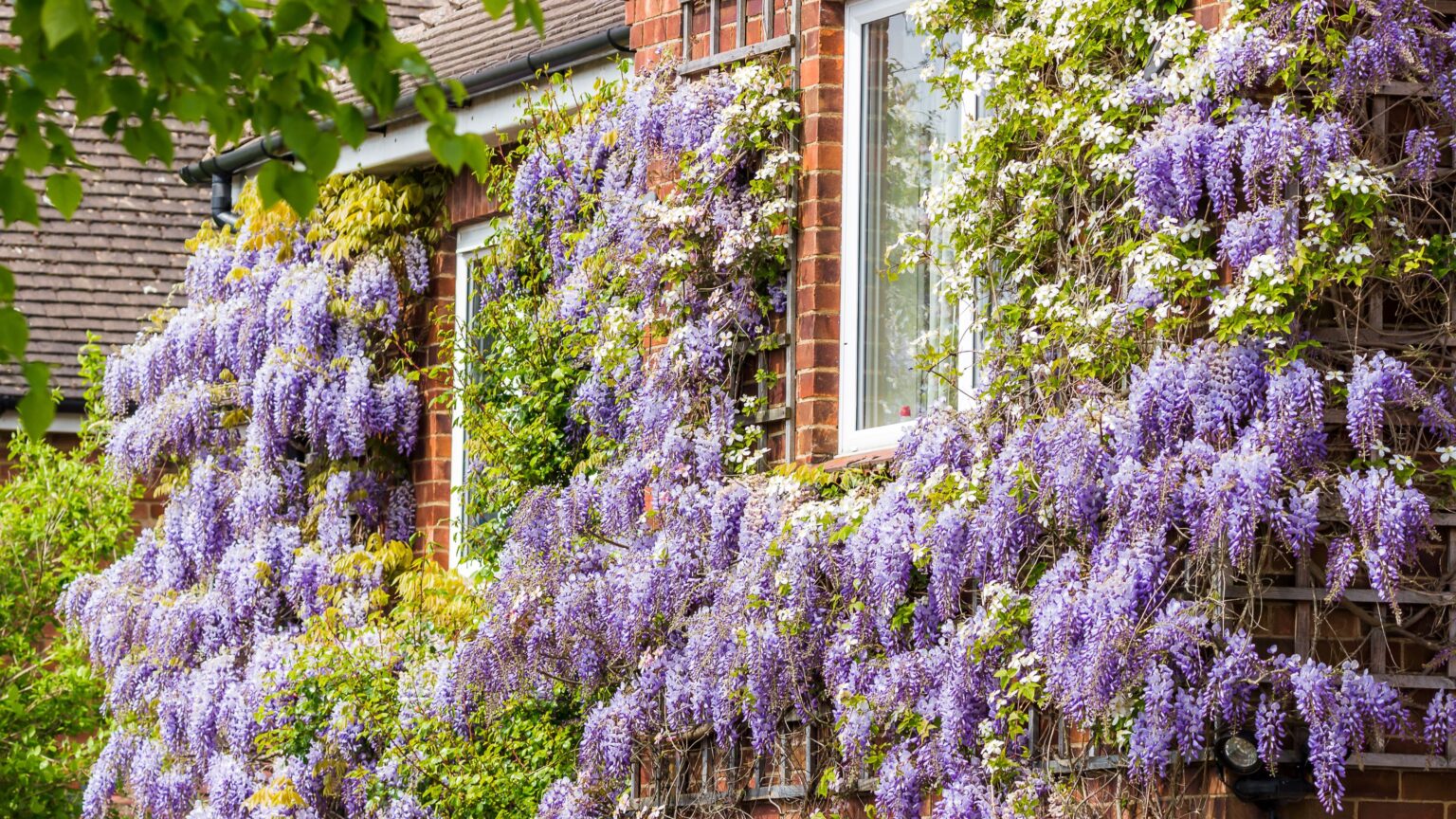Wisteria has got to be one of the most romantic blooms you can add to a garden. But if you want to frame your outdoor space with this iconic plant, then you’ll need to know where to plant wisteria for happy purple blooms.
You may know how to grow wisteria or prune wisteria, but all your hard work risks going to waste if you don’t get your placement right. Luckily, garden experts have revealed the best place to plant wisteria, and it’s good news if you have a south-facing garden.
Wisteria is a sun-loving plant and a strong climber, so where you plant it needs to reflect this. If you want to plant wisteria this April, then this is everything you need to know about where to plant wisteria.
An area with loads of sunshine
To keep wisteria happy, it likes to be planted in a sunny location with ample space and strong support. Planting this wisteria in this way will make it easier to train wisteria and create a scene straight out of Bridgerton.
‘Wisteria thrive in sunlight and needs at least six hours of sun a day, so they will appreciate a south-facing garden. You’ll also want to make sure the area has rich and well-draining soil,’ explains Chris Bonnett, owner of GardeningExpress.co.uk.
‘If you don’t have a south-facing garden, you can still grow most varieties and still get a decent bloom. It may also require some clever planning. For example, if you have an east-facing garden that gets a lot of morning sun but is shady in the afternoon, you may want to opt for Japanese wisteria, which still flowers well in cooler spots.’
If you have a boggy, moist garden, you’ll want to improve your soil’s drainage so wisteria can thrive. You can do this by aerating your soil, regularly adding compost or adding coarse sand, available from Wickes to help with drainage.
An area with strong support
As well as planting in a sunny area with well-draining soil, you should plant your wisteria next to a strong structure.
‘Many gardeners underestimate how heavy and vigorous wisteria becomes. That’s why it’s crucial to use robust supports like pergolas, steel trellises, or masonry walls. Wooden lattice or weak fencing just won’t hold up long-term,’ explains Jose Escalante, gardening expert at Roofing Craftsmen.
‘The plant’s aggressive root system and fast-growing vines also mean it shouldn’t be planted too close to your home, fences, or drainpipes. Ideally, space it 12 to 18 inches from its support to allow for healthy growth.’
If you want wisteria to grow up your house, you still can – you’ll just have to provide a helping hand with the structure wisteria needs to grip to.
‘For wisteria growth around a house, use a wire lattice to give the plant something sturdy to climb and cling on to. Plant wisteria at the base of the structure, around 30cm away, to give it enough space to attach to the support without becoming tangled. This will allow it to train neatly around the structure,’ explains Chris.
‘If you’re looking for a free-standing wisteria, you can train it as a tree. Do this by guiding the wisteria up a straight pole from the young. Encourage the development of lateral shoots to form branches by attaching horizontal supports to the main vertical pole.’
Wisteria is a beautiful and versatile plant that gives any garden an elegant edge. It comes as no surprise that this romantic bloom is the basis of many cottage garden inspiration boards.
What you need
Sarah Raven
Wisteria Sinensis ‘amethyst’
This wisteria variation is beautifully scented and is a lovely mauve colour. It arrives with a climbing support to help you get started.
Ivyline
Ivyline Honeycomb Garden Wall Trellis, 84 X 62cm
This heavy duty wall trellis will help your climbing plants floruish on the side of garden walls and your home.
Westland
Horticultural Sand 20kg
Wisteria likes well-draining soil. If you struggle with particulary wet or boggy soil, horticultural sand can be used to to help create better draining soil.
Read the full article here

